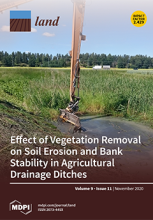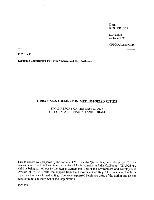/ library resources
Showing items 1 through 9 of 143.Climate change has the potential to disrupt ecosystem services and further exacerbate the effects of human activities on natural resources. This has significant implications for educational institutions and the populations they serve.
Preserving landscape connectivity is one of the most frequently recommended strategies to address the synergistic threats of climate change, habitat fragmentation, and intensifying disturbances.
The Franks Tract State Recreation Area (Franks Tract) is an example of a complex contemporary park mired in ecological and socio-political contestation of what it is and should be.
Cover crops are considered to be beneficial for multiple ecosystem services, and they have been widely promoted through the Common Agricultural Policy (CAP) in the EU and Farm Bill Conservation Title Programs, such as the Environmental Quality Incentives Program (EQIP), in the USA.
We propose a causal analysis framework to increase understanding of land-use change (LUC) and the reliability of LUC models. This health-sciences-inspired framework can be applied to determine probable causes of LUC in the context of bioenergy.
In the face of increasing socio-economic and climatic pressures in growing cities, it is rational for managers to consider multiple approaches for securing water availability.
Between 1940 and 2000, nearly 10 million housing units were constructed throughout California. This increased interaction between human and natural communities creates a number of significant socio-ecological challenges.
Proyecto Gestión Urbana en Ciudades Medianas Seleccionadas de América Latina ITA/92/S71
Proyecto Gestión Urbana en Ciudades Medianas Seleccionadas de América Latina ITA/92/S71
Paginación
Land Library Search
Through our robust search engine, you can search for any item of the over 73,000 highly curated resources in the Land Library.
If you would like to find an overview of what is possible, feel free to peruse the Search Guide.






